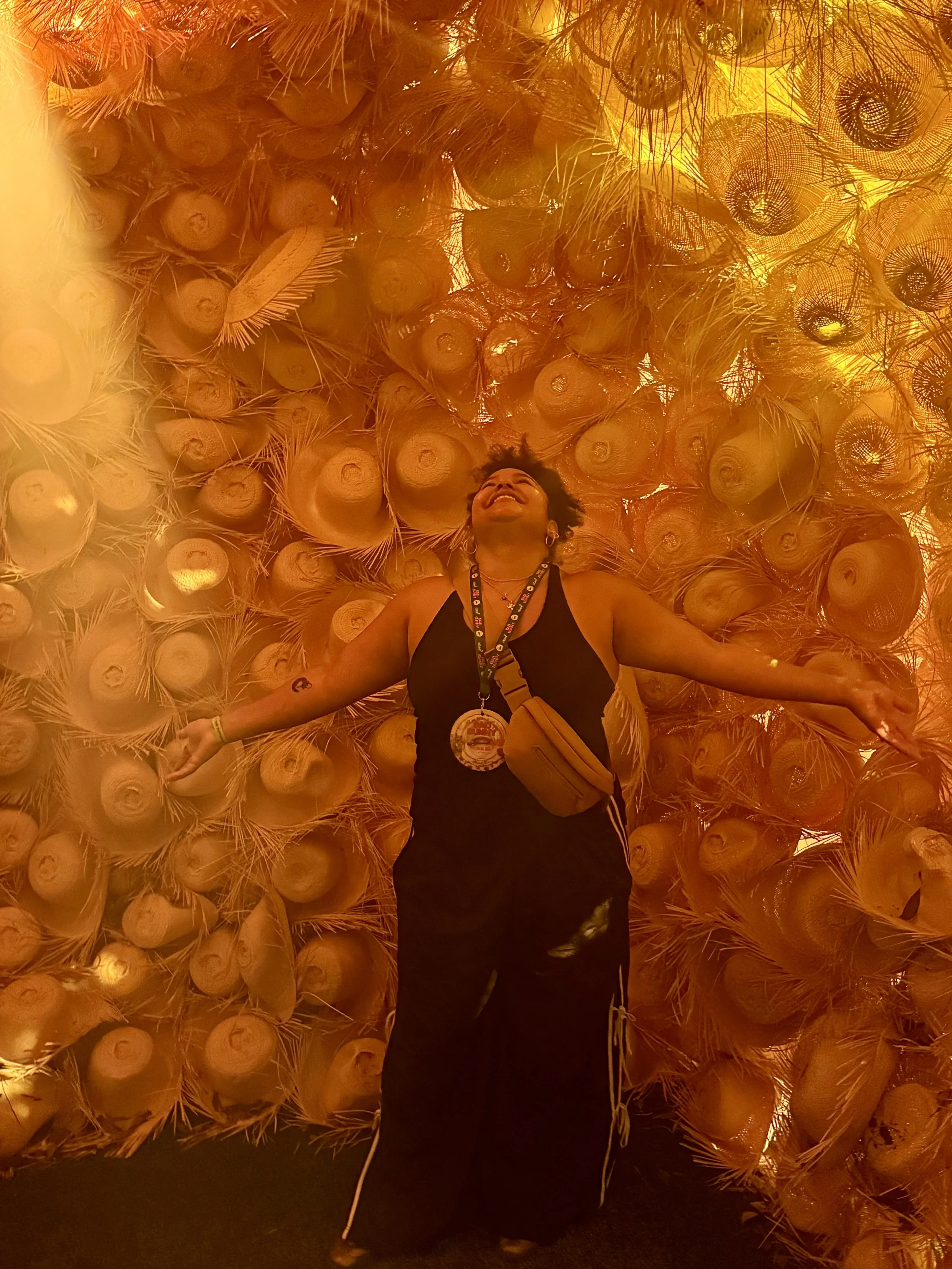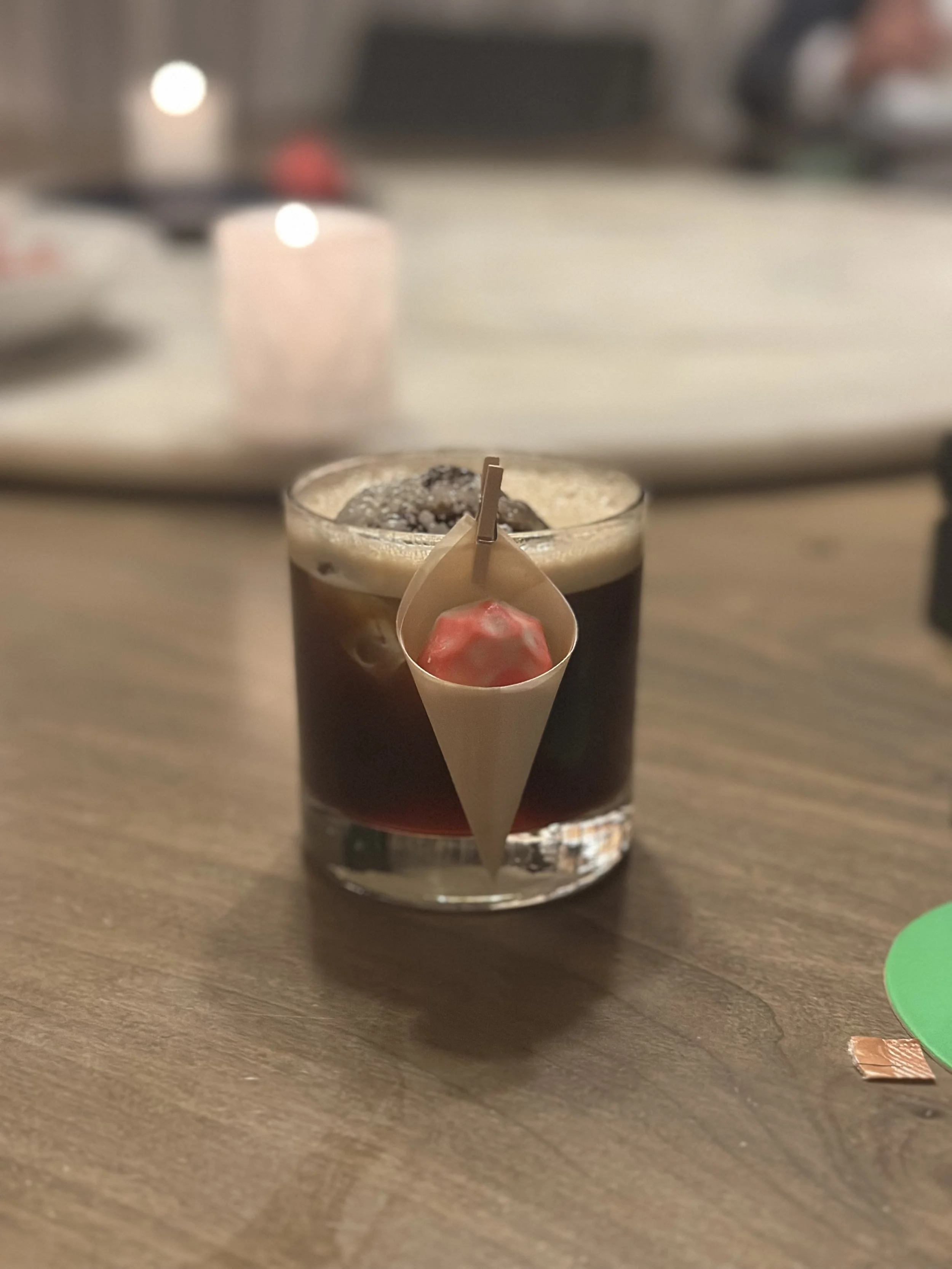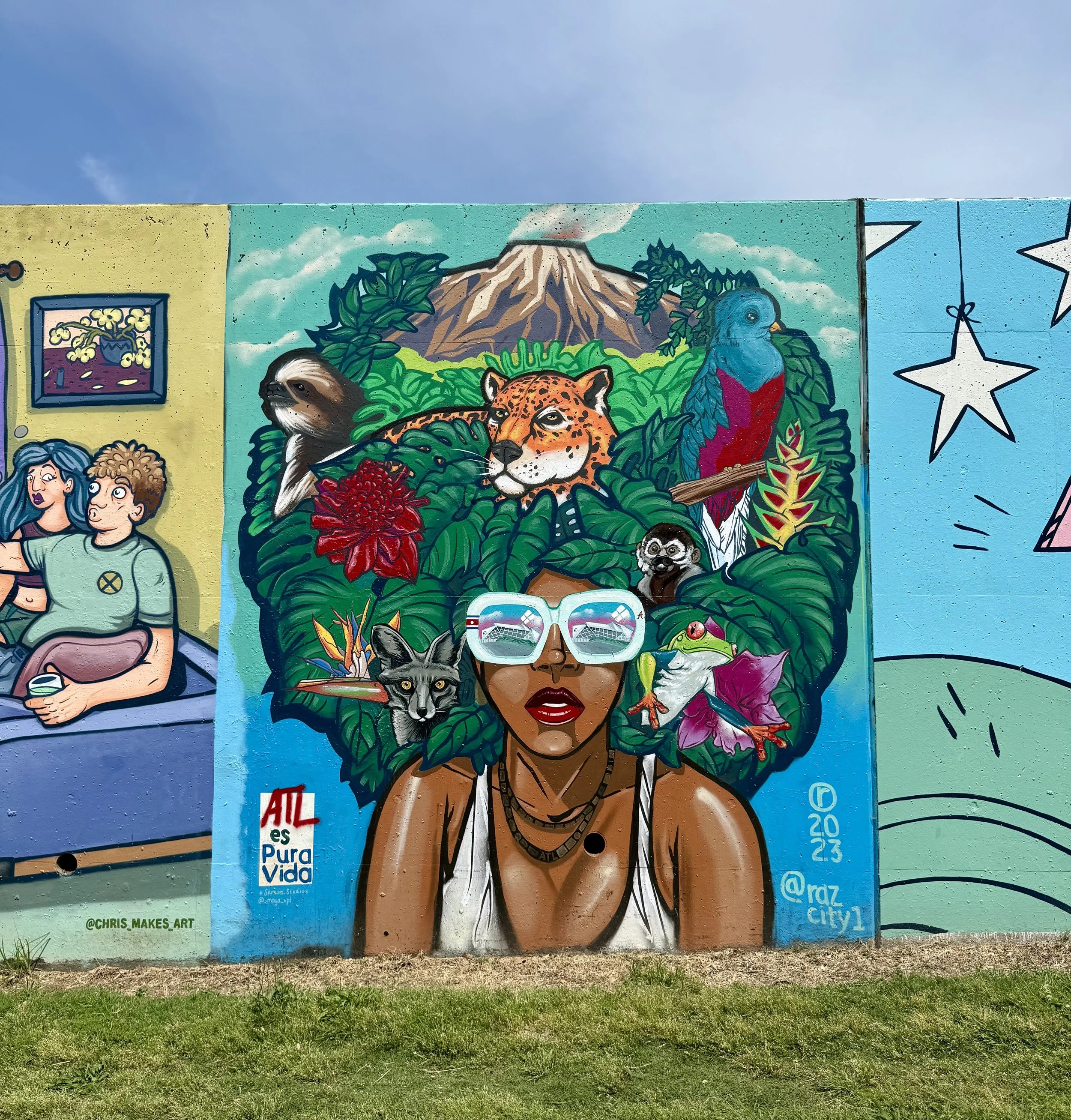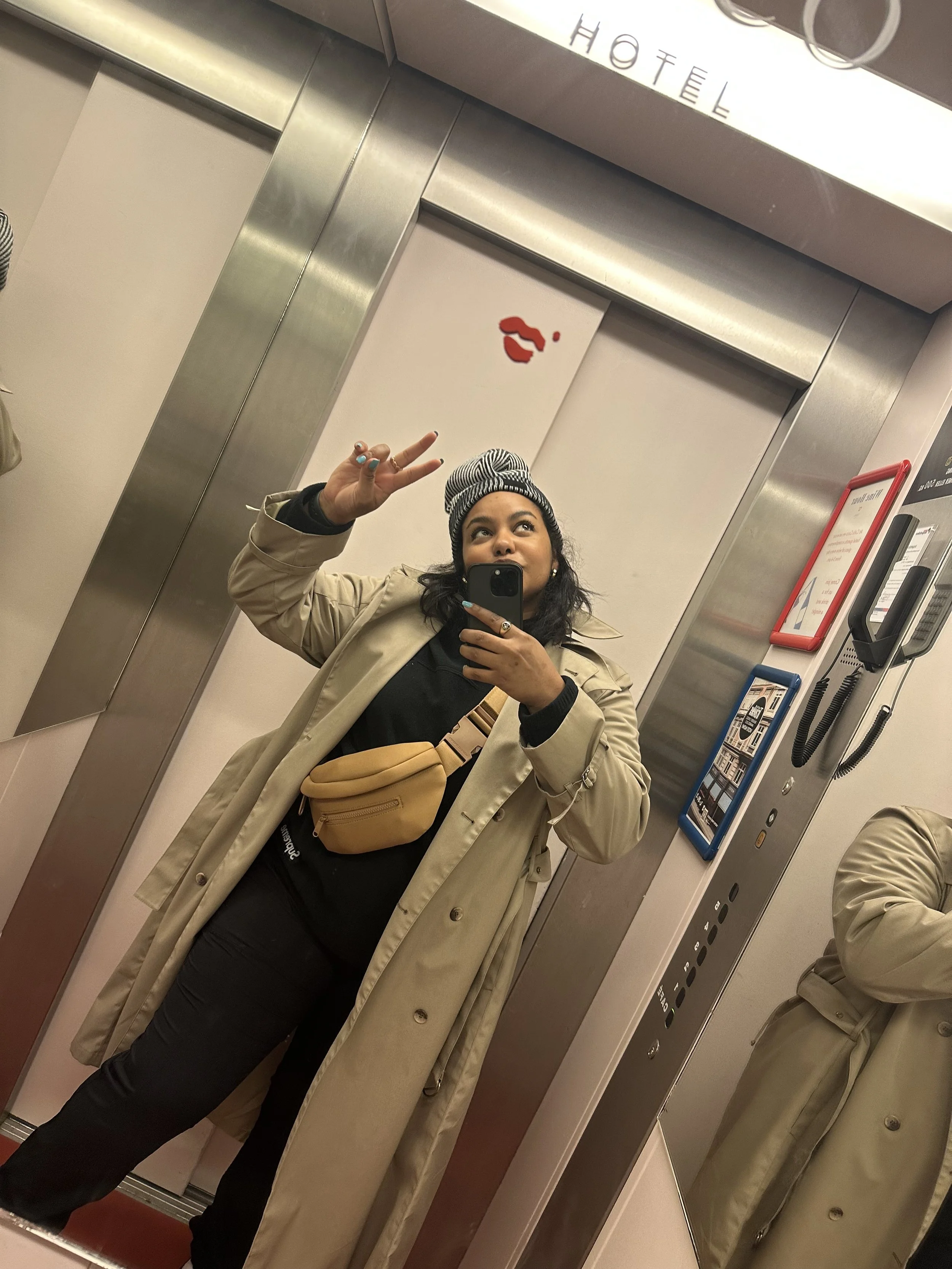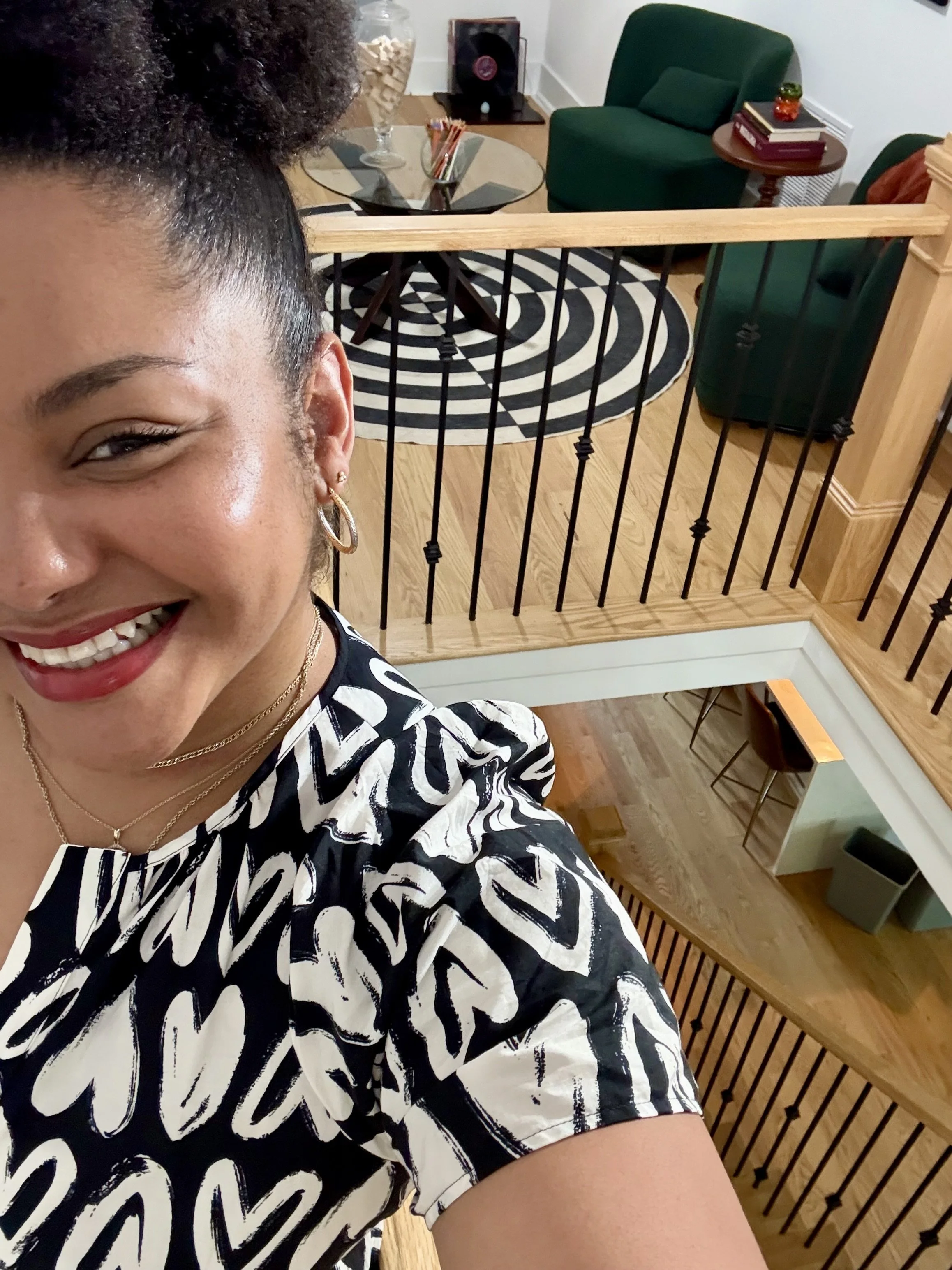Why Every Brand Needs a Customer Journey Checklist
When was the last time you walked through your customer’s experience…step by step?
Too often, brands focus on isolated touchpoints, such as a sleek website, a great onboarding email, or a loyalty program. But customers don’t experience your brand in pieces. They experience it as a journey - and every moment shapes how they feel about you, whether they’ll come back, and whether they’ll recommend you.
That’s where a Customer Journey Checklist comes in.
By mapping and auditing your journey, you can quickly spot:
Where customers feel friction or confusion
Where expectations are being missed (or exceeded!)
Opportunities to add moments of delight that build loyalty
A structured checklist doesn’t just keep your team aligned; it makes sure no part of the journey is left to chance. From awareness and onboarding to engagement, retention, and re-engagement, each stage deserves intentional design.
That’s why I created a free Customer Journey Checklist you can download and use right away. It’s a simple, actionable way to elevate your brand experience across every stage.
Because at the end of the day, great brands don’t just deliver products or services; they deliver experiences people want to return to… again and again.
Why ‘Surprise & Delight’ Still Works…When It’s Real
“Surprise & Delight” has been a buzzword in marketing for years. At its worst, it feels like a gimmick: a branded trinket, a one-off gesture, or a campaign tactic that doesn’t go deeper than the moment. But when it’s done authentically, it still has the power to create loyalty and lasting emotional impact.
The Psychology Behind It
Humans remember how experiences make them feel, not just what they do. A thoughtful surprise triggers positive emotion, which our brains store more vividly than routine interactions. It becomes a story people tell long after the moment passes.
What Makes It Work
Relevance: The gesture matches the person’s needs, preferences, or timing.
Authenticity: It doesn’t feel forced or transactional—it feels genuine.
Scalability with Humanity: Even in a digital-first world, brands (and people) can weave small, meaningful moments into everyday interactions.
Travel as a Case Study
A hotel upgrade, a handwritten note, or remembering a guest’s favorite drink at the bar - these are not huge investments, but they transform how the traveler feels about their stay. The experience shifts from “service” to “care.”
The Takeaway
Surprise & Delight isn’t about being flashy. It’s about being human. When it’s real, it’s not just a marketing strategy; it’s experience design. And it still works because people will always remember the moments that made them feel seen.
What’s one of your favorites?
Why Travel Planning Is Really Experience Design
When most people think of travel planning, they picture logistics - flights, hotels, itineraries. But in reality, planning a trip is much more than booking reservations. It’s an act of experience design.
Think about it: every choice shapes how the traveler will feel, connect, and remember the journey. The destination is just the backdrop. The real magic lies in how the moments are curated:
Flow: A well-designed trip has rhythm, balancing energy with rest, adventure with ease.
Touchpoints: From the welcome drink at check-in to the last sunset view, small details define how the traveler experiences a place.
Personalization: No two travelers are the same. Designing experiences means understanding who they are and crafting something that resonates with their story.
Memory-making: The ultimate goal isn’t just getting from Point A to B - it’s creating moments that will be remembered long after the trip ends.
So, the next time you plan travel - whether for yourself or someone else - consider it through the lens of design. You’re not just putting together logistics. You’re architecting an experience. And the best-designed trips don’t just move people across the world. They move people deeply.
Need a trip planned? Let’s connect.
Curious about CX or need some help with it? I’m now offering office hours - let’s chat.
Why Travel Planning = Experience Design
Planning a trip? You’re already designing an experience.
When most people think of travel planning, they picture booking flights, reserving hotels, or building a day-by-day itinerary. But beneath the logistics lies something deeper: you’re shaping how someone will feel, remember, and carry that journey with them long after it ends. In other words, travel planning is really experience design.
Let’s break it down.
1. Anticipation: The Research + Inspiration Stage
The excitement begins before you ever leave home. Browsing photos, reading reviews, and swapping recommendations create an emotional runway. In UX terms, this is the discovery phase - where expectations form and excitement builds. A well-curated anticipation stage transforms planning from stressful to inspiring, setting the tone for the entire journey.
2. Onboarding: The Welcome & Arrival Moments
The first impression matters. From the airport pickup to the check-in experience, these touchpoints mirror the onboarding experience of a digital product. A smooth, thoughtful welcome eases the transition and makes travelers feel cared for. Just like a brand funnel, if the entry feels clunky, you risk losing trust early.
3. Friction Points: The Delays & Missteps
No journey is perfect. Flights get delayed, rooms aren’t ready, and GPS takes you off-course. These are the pain points travelers remember—and the same goes for customers. Great experience design doesn’t eliminate friction, but it anticipates it, builds in recovery moments, and offers reassurance. A surprise upgrade or quick reroute can turn frustration into delight.
4. Retention: The Memories That Stick
Ask someone about their favorite trip, and they’ll share the standout memory: the meal that lingered, the view that took their breath away, the laugh they couldn’t stop replaying. In CX, these are your sticky moments - the emotional anchors that turn a single interaction into loyalty. Retention isn’t just about repeat bookings; it’s about the feeling someone carries with them, long after the trip is over.
The Parallel Between Journeys & Experiences
Whether it’s a retreat, a vacation, or a customer journey, the parallels are striking. Each requires intentional design, emotional intelligence, and a keen eye for touchpoints. Travel shows us that UX isn’t about screens - it’s about humans.
So what if we treated every experience - whether a trip, a service, or a brand funnel—like a once-in-a-lifetime journey?
We’d design for wonder.
We’d anticipate friction.
We’d honor every transition.
And we’d make memories that last.
That’s the power of seeing travel planning as experience design.
CX Strategy Development IRL
When people hear "customer experience (CX) strategy," they often picture a polished journey map or a catchy mission statement. And while those deliverables might be part of the final output, the real work of CX strategy is much deeper — more collaborative, more human, and a lot messier than you’d expect.
I’ve spent my career helping brands translate their customer challenges into actionable strategies that work. And over time, I’ve found that the most effective CX engagements share a few essential truths.
Let’s break down what CX strategy development actually looks like — beyond the buzzwords.
1. It starts with people, not platforms
Technology is important. But a CX strategy rooted only in tools, dashboards, or automation will always fall flat.
Instead, we start by asking:
Who are we designing for?
What do they need — not just functionally, but emotionally?
Where are the gaps between their expectations and their actual experience?
This means conducting interviews, reviewing real behavior across channels, and understanding the full context of a person’s journey — not just their interactions with your brand.
2. It’s cross-functional from day one.
A true CX strategy connects dots across silos. That means bringing in stakeholders from marketing, product, operations, legal, and yes — even tech and compliance.
I often lead cross-functional workshops where we map not just the customer journey, but the internal systems and decisions affecting it. This helps everyone understand how their role contributes to (or blocks) the experience we’re trying to create.
Pro tip: When internal alignment becomes part of the CX output, transformation moves faster.
3. It’s visual, layered, and actionable
The deliverables of CX strategy are more than documents — they’re decision-making tools.
Whether it’s a journey map, message architecture, persona set, or experience blueprint, the goal is to give teams something they can use. Something that bridges strategy and execution.
For example, I once helped a client build a tiered rewards program that visualized emotional motivators by segment. This allowed the marketing team to personalize messaging, the tech team to create the right nudges, and the data team to measure progress — all from a single framework.
4. It evolves with your ecosystem.
Your business isn’t static. Neither is your customer. CX strategy is most valuable when it’s treated as a living framework, not a one-and-done deliverable.
At The Marq Digital, we design strategies that can adapt — with modular messaging systems, AI-informed content workflows, and performance touchpoints that evolve as your users and platforms do.
Ready to build your CX foundation?
CX strategy isn’t just about designing better touchpoints. It’s about building better relationships — with your customers, your teams, and your goals.
If you’re ready to elevate your brand through smart, human-centered strategy, let’s talk.
📅 Book a Discovery Call
From Puerto Rico to the Pixel: Designing Experiences That Stay With You
When people hear I design both digital customer journeys and immersive retreats in places like Puerto Rico, they often think the two couldn’t be more different.
Screens vs. sunsets. Emails vs. ocean breezes. Click-through rates vs. cultural adventures.
But here’s the truth: The experience design framework is exactly the same.
Whether I’m mapping a brand’s online touchpoints or curating a five-day cultural immersion, I follow four key pillars that turn good experiences into unforgettable ones.
1. Onboarding: Set the Tone Early
In customer journey mapping, onboarding (also referred to as awareness) is your chance to make a lasting first impression — the welcome email, the product tour, and the “this brand gets me” moment.
In retreat planning, onboarding starts the second a guest books - upon receipt of:
A confirmation email that sparks excitement
A pre-trip guide that reduces uncertainty
A personal welcome when they arrive on site
Whether online or in person, this phase sets the tone and builds trust from the very first touchpoint.
2. Surprise Elements: Add the Unexpected Wow
Surprise is a powerful tool in experience design. In the digital space, it might be a bonus resource or an unexpected feature.
In a curated travel experience, surprises might include:
A chef’s off-menu special
A delightful detour to a local artisan’s workshop
A sunset picnic guests didn’t see coming
These moments don’t just add delight — they create emotional connections that keep people talking long after the experience ends.
3. Feedback Moments: Stay in Tune
Great experiences don’t wait until the end to check in.
In digital CX, feedback moments might include surveys, in-app prompts, or live chat check-ins.
At a retreat, it’s the breakfast conversation that sparks adjustments, or the casual midweek chat that uncovers a small change to make the day even better. Real-time listening shows you’re not just delivering a service — you’re shaping an experience together.
4. Intentional Closure: End on a High Note
The way an experience ends often determines how it’s remembered.
In a brand relationship, intentional closure might mean a thoughtful offboarding email, a thank-you gift, or a loyalty program invitation.
In a retreat setting, it’s the farewell brunch, the reflection circle, and the group photo that becomes a keepsake. Closure leaves people not just satisfied, but deeply connected.
Why the Four Pillars Work Everywhere
From a customer experience strategy standpoint, these pillars ensure that every journey — whether it’s through a website or El Yunque rainforest — is meaningful, intentional, and memorable.
Because experiences shouldn’t just serve.
They should stay with you.
That’s why I approach every project, from brand storytelling to curated travel, with the same guiding question:
How do we design experiences that move people — not just move product?
Your Turn:
Think about an experience you still remember years later. Was it the welcome, the surprise, the check-in, or the way it ended that made it unforgettable?
Wait, is that…a conflict of interest?
Let’s talk transparency.
As the founder of The Marq Digital, I’ve built a boutique strategy studio focused on helping nonprofits, lifestyle brands, and mission-driven businesses elevate their customer experiences. I also work full-time in a strategic role at Epsilon, a global powerhouse in data-driven marketing, where I support enterprise clients in building loyalty, personalization, and CX strategies that drive business results.
So naturally, a few people have asked: Is there a conflict of interest?
The short answer: No.
The long answer? Let’s get into it.
1. Clearly Defined Boundaries
The Marq Digital operates in a different lane — and scale — than Epsilon. My studio focuses on smaller, non-competitive clients across sectors like community-based organizations, travel, legal services, and small-scale professional brands. These are not accounts that overlap with Epsilon’s enterprise client base - or strategic roadmap.
Moreover, all of my work for The Marq Digital happens outside of business hours, is self-funded, and structured to ensure there’s no overlap in deliverables, tools, or technologies used.
2. Different Business Models, Different Goals
At Epsilon, I contribute to large-scale, enterprise CX and loyalty transformation — work that involves complex data integration, global strategy, and long-term roadmaps.
At The Marq Digital, I’m guiding smaller teams through nimble, foundational CX strategy, content audits, and digital storytelling — often for clients who are building their very first roadmap. It’s about human-centered design at the ground level, not enterprise martech deployment.
3. Creative Practice = Professional Growth
Owning a small business has made me better at what I do in my full-time role. It keeps me close to emerging trends, sharpens my creative problem-solving, and reinforces how different types of organizations think, feel, and act. These experiences give me a broader lens when working with Epsilon clients — especially when helping enterprise brands humanize their strategy and think more like startups.
4. Everything Above Board
I’ve proactively disclosed The Marq Digital to Epsilon and confirmed that it aligns with company policies. There are no conflicts in client type, market positioning, or technology — and I maintain strict separation between both roles.
5. Why I’m Sharing This
Because I believe in clarity, integrity, and building in the open. The work I do — whether for a Fortune 100 company or a nonprofit trying to better serve its community — is driven by the same values: empathy, strategy, and people-first design.
I’m proud to wear both hats. And I’m even more proud to do it transparently and ethically.
Have questions? I’m always open to honest conversations.
You can learn more about The Marq Digital here, or explore my work here.
Let’s build better experiences — wherever they happen.
Brand Voice Is CX. Not Just Marketing.
When we talk about “brand voice,” people often think: social media captions, email subject lines, taglines.
But the truth is: your brand voice isn’t what you write — it’s how you show up.
Everywhere.
Consistently.
It's in the tone your customer support team uses, in the words on your receipts, the way you explain delays, and how your FAQs feel to read.
That’s why voice is more than a marketing tool.
It’s a customer experience driver.
The Brands That Win Sound Like Themselves — Always
I’ve worked with brands across industries — from nonprofit to hospitality — and the ones that leave an impression don’t just have a great brand book.
They sound like themselves in every touchpoint:
Their DMs feel human (not templated)
Their invoices match their energy
Their content isn’t just “on-brand” — it’s on-purpose
Consistency isn’t about being robotic.
It’s about building recognition and trust.
When customers know what to expect from your voice, they lean in. They feel seen. They’re more likely to return.
Voice = Relationship
Think of your brand voice like a friendship.
Would you trust someone who spoke warmly to your face… but passive-aggressively via text?
Would you refer to a company whose IG is cheeky but whose emails feel cold and corporate?
Probably not.
When your tone matches across channels, people know you mean it.
A Quick Brand Voice Check-Up
Here’s a mini framework I use with clients when auditing their brand voice across the customer journey:
So, What’s Your Voice?
If you’re building a business or leading a brand, here's your homework:
Audit your last 3–5 customer touchpoints
Ask: “Would I know this was us if the logo was removed?”
If not — that’s your signal to realign
Brand voice isn’t a fluff exercise. It’s a trust accelerator. A loyalty lever. A signal of who you are — even when you’re not in the room.
Make sure it reflects the experience you want people to have with you.
Solo Travel Taught Me Everything I Know About CX
Before I was mapping journeys for global brands, I was navigating them on my own — backpack slung over my shoulder, passport in hand, learning how to move through unfamiliar places with intention, curiosity, and trust.
What I didn’t realize then was that solo travel was shaping the foundation of how I approach customer experience (CX). Because at its core, CX is about guiding someone through a journey where they are the hero — and your brand is just a well-placed guide, offering clarity, ease, and maybe even delight along the way.
Here’s what solo travel taught me that now shows up in every CX strategy I lead:
1. Every journey is emotional
When you travel alone, it’s not just about logistics — it’s about emotion. The excitement of stepping into a new culture. The anxiety of getting lost. The relief of finding someone who speaks your language.
Sound familiar?
Your customers are on an emotional journey too. Whether they’re opening a bank account, scheduling a notary appointment, or booking a dream trip, their decisions are shaped by how they feel at every stage.
Good CX anticipates emotion. Great CX designs for it.
2. Friction is inevitable — but clarity is everything
In Spain, I once tried to buy a train ticket from a machine that only accepted exact change… in coins… with zero signage in English.
It reminded me that confusion is the biggest CX killer. Not price. Not competition. Confusion.
The best brands don’t just remove friction — they guide people through it with clarity, empathy, and smart design.
3. Personalization makes people feel seen — not stalked
When a local shop owner in Oaxaca remembered my name the second time I walked by, I felt seen. Cared for. Connected.
That’s what real personalization does. It’s not just data-fueled targeting — it’s recognizing people in meaningful, relevant ways.
Whether I’m building journeys for a loyalty program or rewriting content for a mobile banking app, I use personalization as a trust-building tool, not a gimmick.
4. Moments of delight create memories that last
Travel is made up of tiny moments: a handwritten welcome note at check-in, a local guide who goes off script, a perfectly timed espresso on a cobblestone street.
In CX, these are called “micro-moments” — and they matter. Because no one remembers the full map. They remember how they felt in one standout moment.
Great brands know this. They design for those small moments, again and again.
5. Trust is earned — one experience at a time
When you're traveling solo, you learn quickly who to trust: the hotel that responds fast, the platform that delivers on its promise, the driver who shows up on time.
The same goes for brands. CX is how trust is built — not through marketing, but through consistent, honest, thoughtful interactions that make people feel safe, valued, and understood.
Final Thoughts
I didn’t set out to connect travel and CX. But I’ve found that the best experience designers think like travelers: curious, observant, and always focused on the path ahead.
So whether I’m helping a client optimize their content system or mapping a digital journey for a bank, I bring the same mindset I carry on the road: human first. Every time.
📍And if you're looking for a guide to help map your next customer journey? I'm ready when you are.
👉 Let’s build something meaningful.
3 Pillars, 1 Mission: Building a Human-Centered Brand Ecosystem
What do customer experience strategy, cultural travel, and notary services have in common?
At first glance, not much. But through my lens — as a strategist, cultural curator, and connector — they’re all part of a shared mission: to design moments that are thoughtful, empowering, and deeply human.
I’m thrilled to introduce my new digital home: [ShannonOwens.com], a portfolio site that brings together everything I do across The Marq Digital, Marqui Travel Method, and S. Owens & Associates — three distinct businesses connected by one purpose: to make life’s experiences more intentional, seamless, and meaningful.
Why Build a Personal Brand Ecosystem?
After years of helping nonprofits, healthcare brands, and startups rethink how they engage people, I realized something: my work — and life — doesn’t fit neatly into a single box.
I’m not just a strategist.
I’m not only a traveler or a business owner.
I’m a multi-hyphenate with a clear throughline: center the human, and everything else gets better.
That insight led me to build a brand ecosystem that reflects who I am and how I serve — holistically.
The Marq Digital
Where strategy meets soul.
This is the consulting arm of my work — focused on CX, UX, and content strategy for purpose-driven brands. I help teams map journeys, audit digital experiences, and build strategies rooted in clarity, equity, and impact. Think of me as your Fractional CXO — without the corporate fluff.
➡️ [Explore Marq Digital Services]
Marqui Travel Method
Where culture and freedom collide.
Born from my love of solo travel and cultural immersion, this branch is all about curated experiences that feed the spirit. Whether it’s building a custom itinerary or hosting retreats in places like Puerto Rico, I help people travel deeply — not just widely.
➡️ [Join the Retreat Waitlist]
S. Owens & Associates
Where trust meets efficiency.
My notary business may be local, but its role is profound. Whether someone’s buying a home, finalizing a will, or notarizing life-changing documents, I show up with professionalism, empathy, and ease. Sometimes the most “ordinary” services carry the most emotional weight — and I don’t take that lightly.
➡️ [Book Notary Services]
So, Why Bring It All Together?
Because life isn’t linear. And business doesn’t have to be one-dimensional.
This site reflects the full version of me — a strategist who leads with clarity, a traveler who leads with curiosity, and a service provider who leads with care.
More importantly, it reflects my belief that every touchpoint — digital, personal, or logistical — can and should be designed with intention.
What’s Next?
Regular blog posts on CX, travel, and solopreneurship
Digital tools and resources for small biz owners and creators
A new retreat offering (👀 coming soon!)
Ongoing consulting projects with values-aligned organizations
If any part of my work resonates with you, I’d love to connect. Whether you’re building a nonprofit strategy, planning a dream trip, or need help with something simple but significant — I’m here.
🔗 Explore the full site → [ShannonOwens.com]
💌 Say hello → [Contact Page or Email CTA]

